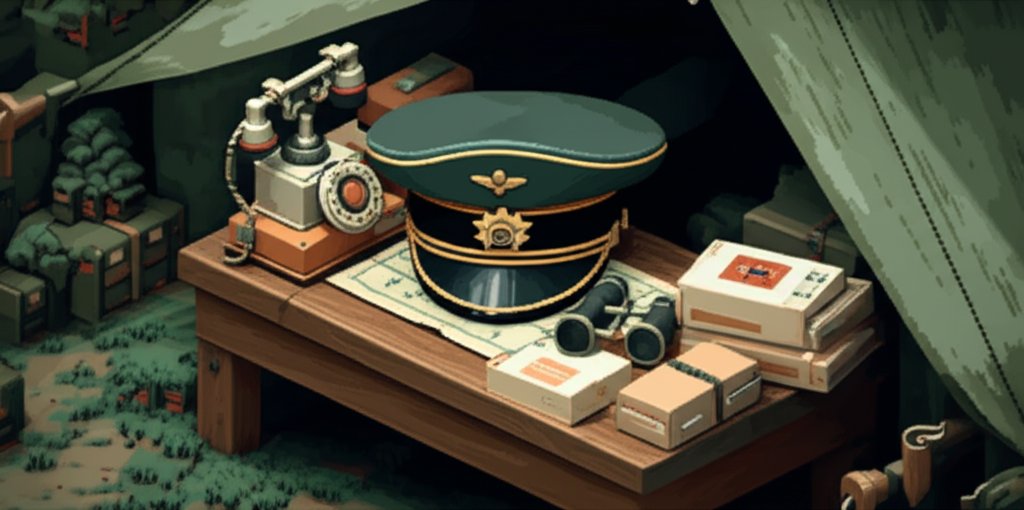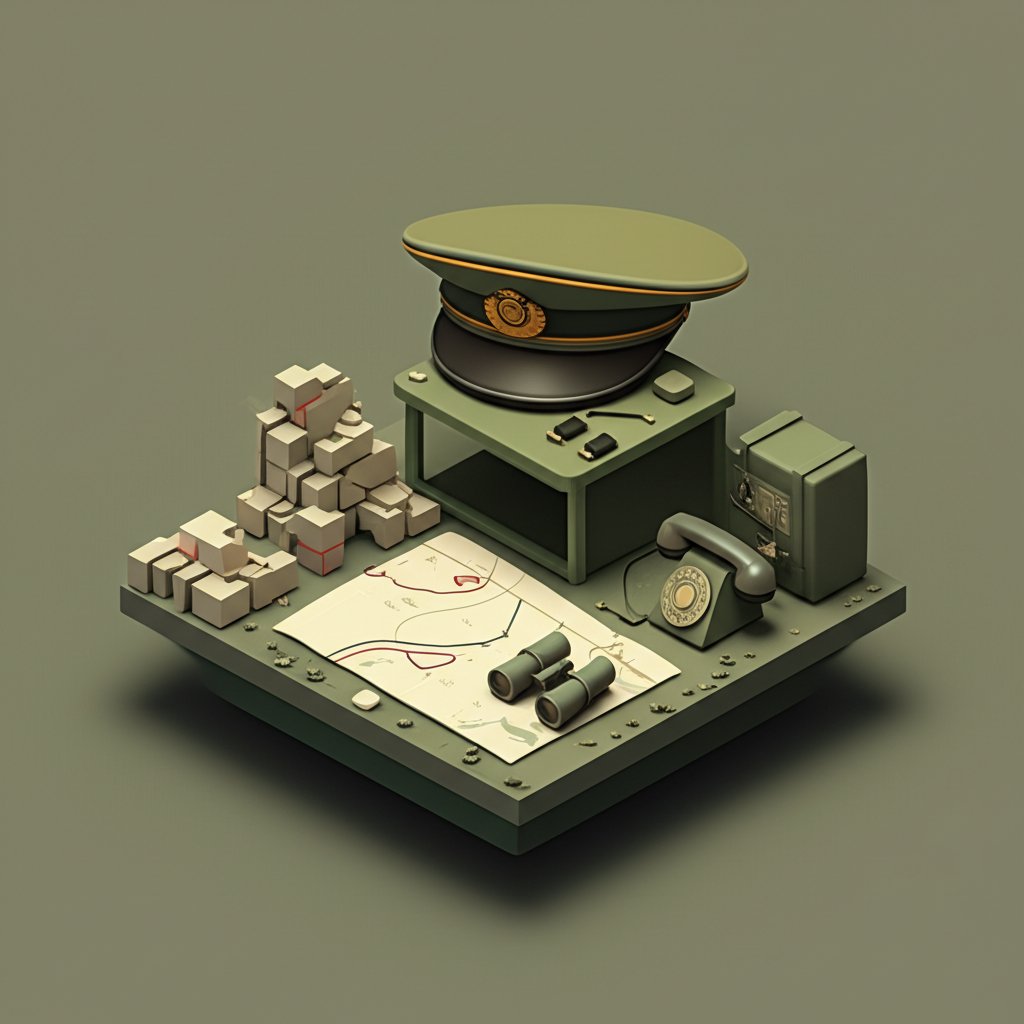The Great War, a cataclysmic conflict that tore across the globe from 1914 to 1918, thrust humanity into an era of unprecedented violence and innovation. Amidst the mud, blood, and barbed wire, a distinct class of WWI Generals emerged – men whose strategic brilliance, tactical prowess, and unwavering will dictated the fate of nations. These World War I Generals were not merely leaders; they were the Elite Masterminds of World War I, forced to adapt to a rapidly evolving battlefield defined by new technologies and industrial-scale destruction.
This article delves into the complex legacies of the most influential WWI Commanders, examining their strategies, their successes, their failures, and the enduring impact they had on military history. From the Western Front’s stalemates to the dynamic campaigns in the East and beyond, we uncover the individuals who left an indelible mark as World War One Leaders, shaping the course of a war that forever changed the world.
Considering the immense pressure they faced and the rapidly changing landscape of battle, understanding the qualities that made these individuals stand out is key, and exploring other examples of iconic military leaders offers further insight into effective command in times of crisis.
The Unprecedented Challenges Facing World War I Generals
The First World War presented a strategic landscape unlike any seen before. The rapid advancements in weaponry, coupled with the sheer scale of mobilization, transformed warfare into a brutal, attritional struggle. Military Commanders WWI were thrust into a crucible where traditional cavalry charges gave way to trench warfare, and individual heroism often yielded to the grinding logic of artillery barrages and machine-gun fire.
The Dawn of Modern Warfare: Technology and Tactics
At the outset of the war, many generals were trained in 19th-century military doctrines, emphasizing maneuver and decisive battles. However, the introduction of rapid-fire artillery, machine guns, and later, tanks, aircraft, and chemical weapons, rendered these tactics obsolete. WWI Leaders had to grapple with the devastating effectiveness of defensive positions, where a few well-placed machine guns could halt an entire infantry advance. This technological shift created an immense strategic dilemma, forcing generals to rethink fundamental principles of attack and defense.
Trench Warfare: A Strategic Impasse
The iconic image of World War I is the trench. Stretching for hundreds of miles across the Western Front, these elaborate defensive networks turned the battlefield into a meat grinder. Breaking through such fortified lines proved immensely difficult, leading to prolonged stalemates, battles of attrition, and staggering casualty counts. World War I Generals often faced the impossible task of achieving breakthroughs against deeply entrenched enemies, a challenge that tested their resolve and led to desperate, often costly, offensive strategies. The psychological toll on troops and commanders alike was immense.
Logistics and Manpower on an Industrial Scale
World War I was total war, demanding the mobilization of entire societies and their industrial capacities. WWI Commanders were responsible not only for battle plans but also for managing unprecedented logistical operations—feeding, clothing, arming, and transporting millions of soldiers. The scale of manpower required meant that commanders often had to train and integrate vast numbers of conscripts, further complicating strategic planning and tactical execution. The ability to sustain long-term operations and replace losses became as crucial as battlefield brilliance.
Allied Masterminds: Architects of Victory
The Allied forces, initially a disparate collection of nations, eventually found cohesion under several pivotal WWI Commanders. These World War One Leaders forged diverse armies into a formidable fighting force that ultimately overcame the Central Powers.
Ferdinand Foch (France): Supreme Allied Commander
Often hailed as the “Architect of Allied Victory,” Ferdinand Foch’s role transcended national boundaries. Starting as commander of the French Ninth Army, his strategic acumen saw him rise to become the Commander-in-Chief of the Allied Armies in March 1918.
- Strategic Vision: Foch was a proponent of the offensive and, crucially, understood the need for a unified command. His greatest contribution was coordinating the often-independent strategies of British, French, and American forces, ensuring a cohesive front against the final German offensives.
- Key Contributions: His leadership during the Second Battle of the Marne (July-August 1918) was pivotal in halting the last major German push. He then orchestrated the grand Allied Hundred Days Offensive (August-November 1918), a series of coordinated attacks that relentlessly pushed back German forces, leading directly to the Armistice. Foch exemplified the ability of Greatest Generals WWI to transcend national interests for a common goal.
John J. Pershing (United States): Forging the AEF
General John J. Pershing, known as “Black Jack,” commanded the American Expeditionary Forces (AEF). His leadership was crucial in transforming a relatively small, inexperienced American army into a powerful fighting machine.
- Organizational Genius: Pershing famously resisted attempts to break up American units to reinforce Allied armies, insisting on maintaining a distinct American force. This monumental task of training, equipping, and deploying over two million men to Europe was a logistical and organizational masterpiece.
- Battlefield Impact: Under his command, the AEF demonstrated its strength in battles like Saint-Mihiel and, most significantly, the Meuse-Argonne Offensive. This massive offensive, involving over a million American soldiers, played a decisive role in breaking the Hindenburg Line and exhausting German resistance. Pershing demonstrated the importance of firm leadership and strategic independence for WWI Commanders.
Sir Douglas Haig (Great Britain): The Controversial Commander
Field Marshal Sir Douglas Haig commanded the British Expeditionary Force (BEF) for much of the war on the Western Front. His legacy remains hotly debated among historians.
- Attrition and Perseverance: Haig believed in a strategy of attrition, aiming to wear down the enemy through continuous, large-scale offensives. He oversaw some of the war’s bloodiest battles, including the Somme (1916) and Passchendaele (Third Battle of Ypres, 1917). Critics point to the immense casualties under his command, dubbing him “Butcher Haig.”
- Ultimate Victory: Supporters argue that his relentless pressure, despite the cost, was necessary to exhaust the Germans and that his command ultimately led to significant Allied victories in 1918. He was instrumental in integrating new technologies like tanks, albeit often in piecemeal fashion initially. Haig represents the difficult choices and immense pressures faced by World War I Generals in a total war scenario.
Philippe Pétain (France): The Hero of Verdun
Henri Philippe Pétain became a national hero for his resolute defense during the Battle of Verdun (1916), one of the longest and most brutal engagements in history.
- Defensive Mastermind: Pétain’s command at Verdun showcased his genius for defensive strategy. He prioritized logistics, ensuring a continuous flow of supplies and fresh troops via the “Voie Sacrée” (Sacred Way), and effectively rotated units to prevent exhaustion. His mantra, “They shall not pass,” became France’s rallying cry.
- Restoring Morale: After the disastrous Nivelle Offensive in 1917, Pétain was appointed Commander-in-Chief of the French Army. He skillfully restored morale among the mutiny-plagued troops through improved conditions and a more cautious, defensive approach, effectively stabilizing the French front until American forces arrived. His later controversial role in WWII should not overshadow his crucial contributions as one of the most effective Military Commanders WWI.
Sir John Monash (Australia): Innovation in Combined Arms
Lieutenant General Sir John Monash, an Australian engineer before the war, proved to be one of the most innovative and effective WWI Commanders on the Allied side.
- Tactical Innovation: Monash meticulously planned and executed battles, integrating new technologies and tactics like tanks, artillery, aircraft, and infantry in a coordinated “combined arms” approach. He emphasized detailed reconnaissance, careful timing, and preliminary bombardments with specific objectives.
- Battle of Hamel: His brilliant execution of the Battle of Hamel (1918) was a textbook example of combined arms, achieving objectives with minimal casualties in a remarkably short time. This success was a precursor to the tactics that eventually broke the Western Front stalemate. Monash’s scientific approach to warfare marks him as one of the truly Greatest Generals WWI.
Armando Diaz (Italy): Steadfastness on the Alpine Front
General Armando Diaz took command of the Italian Army after the catastrophic defeat at Caporetto in 1917. His leadership was critical in preventing Italy’s collapse.
- Restoration and Defense: Diaz successfully reorganized the demoralized Italian forces, stabilized the front along the Piave River, and implemented more realistic tactical approaches. He focused on defensive strength and rebuilding morale.
- Victory at Vittorio Veneto: Under his command, the Italian Army, supported by Allied troops, achieved a decisive victory at the Battle of Vittorio Veneto (1918), which led to the collapse of Austria-Hungary and significantly contributed to the end of the war. Diaz demonstrated how effective leadership could turn the tide even after a crushing defeat, solidifying his place among influential World War One Leaders.
Central Powers’ Elite: Strategic Innovators and Defenders
The Central Powers also boasted formidable World War I Generals who achieved significant victories, particularly on the Eastern Front, and innovated in the face of overwhelming odds.
Paul von Hindenburg & Erich Ludendorff (Germany): The Eastern Front Duo
Field Marshal Paul von Hindenburg and his chief of staff, General Erich Ludendorff, became the de facto military leaders of Germany, particularly after their successes on the Eastern Front.
- Tannenberg and Masurian Lakes: This powerful duo achieved stunning victories against the Russian armies at Tannenberg (1914) and the First and Second Battles of the Masurian Lakes, effectively crippling Russia’s early war efforts. Hindenburg provided the stoic, authoritative figurehead, while Ludendorff was the tactical and strategic mastermind.
- Supreme Command: Their influence grew to such an extent that by 1916, they essentially controlled Germany’s war policy, dictating military and even political decisions. They oversaw the construction of the formidable Hindenburg Line and initiated the large-scale Spring Offensive (Ludendorff Offensive) in 1918, a last desperate bid for victory on the Western Front. Their combined leadership shaped German strategy and showcased the profound impact of Greatest Generals WWI on national policy.
Paul von Lettow-Vorbeck (Germany): The Ghost of East Africa
General Paul von Lettow-Vorbeck led a small force of German and askari (local African) troops in East Africa, conducting a highly successful guerrilla campaign against significantly larger Allied forces throughout the entire war.
- Guerrilla Warfare Master: Lettow-Vorbeck’s campaign is a masterclass in unconventional warfare. Outnumbered often by more than ten to one, he tied up vast numbers of British, Indian, and South African troops who could have been deployed to other fronts. He was the only German commander who remained undefeated in the field and surrendered only after the Armistice in Europe.
- Resourcefulness and Resilience: His ability to sustain his forces, acquire supplies from the land, and repeatedly evade and engage the enemy demonstrated incredible resourcefulness and leadership. Lettow-Vorbeck stands as a unique example of WWI Commanders who achieved strategic objectives through brilliant, asymmetrical warfare.
Mustafa Kemal Atatürk (Ottoman Empire): Gallipoli’s Defender
Though his global command was limited compared to others, Mustafa Kemal’s defensive genius at Gallipoli had world-altering consequences, marking him as one of the most impactful World War One Leaders.
- Defensive Brilliance at Gallipoli: As a divisional commander, Kemal played a crucial role in repelling the Allied landings at Gallipoli in 1915. His quick thinking, bravery, and ability to inspire his troops in critical moments, often personally leading counterattacks, turned the tide against the British and Anzac forces.
- Founding a Nation: The victory at Gallipoli cemented his reputation as a military hero, a foundation upon which he would later build the modern Turkish Republic. His actions prevented a crucial Allied breakthrough that could have opened a route to Russia and knocked the Ottoman Empire out of the war much sooner. His tactical and inspirational leadership marks him as a truly elite Military Commander WWI.
Svetozar Boroević von Bojna (Austria-Hungary): The Lion of Isonzo
Field Marshal Svetozar Boroević von Bojna was an Austro-Hungarian general of Serbian origin, renowned for his defensive capabilities on the Italian Front.
- Indomitable Defense: Boroević commanded the Austro-Hungarian Fifth Army during the eleven Battles of the Isonzo River against the persistent but ultimately unsuccessful Italian offensives. His troops, often outnumbered and undersupplied, held their ground with extraordinary tenacity.
- Strategic Resilience: His steadfast defense prevented the Italian breakthrough into the Austro-Hungarian heartland, significantly impacting the course of the war on the Southern Front. He earned the moniker “Lion of Isonzo” for his ability to maintain the front against immense pressure, showcasing the critical role of defensive-minded WWI Generals.
The Legacy and Lessons of WWI Commanders
The World War I Generals, whether celebrated or condemned, left an indelible legacy that reshaped military doctrine and international relations. Their experiences underscore the profound impact of leadership in times of unprecedented global conflict.
Adapting to Unprecedented Warfare
The Great War forced a radical re-evaluation of military strategy. The commanders who succeeded were often those capable of adapting to new technologies, understanding the psychological toll of trench warfare, and mastering the complex logistics of industrial-scale conflict. Their innovations, from Monash’s combined arms to Foch’s unified command, laid the groundwork for future military thought, even amidst the criticisms of their sometimes-costly learning curves. These were the Elite Masterminds of World War I, grappling with a wholly new form of conflict.
The Human Cost of Strategic Decisions
A critical aspect of the legacy of WWI Commanders is the immense human cost. The sheer scale of casualties, often reaching hundreds of thousands in single battles, leads to ongoing debates about the efficacy and ethics of their leadership. Understanding the pressures and constraints under which they operated is crucial, but it does not erase the tragic reality of lives lost due to strategic decisions, attrition warfare, or failed offensives. This complex and often somber reflection remains central to studying World War I Generals.
Enduring Influence on Military Doctrine
Despite the controversies, the tactical and strategic lessons learned by WWI Leaders continue to influence military thinking today. The importance of logistics, combined arms operations, unified command structures, and the psychological impact of modern warfare were all brought into stark relief during this period. The methods these Military Commanders WWI developed, often through trial and error, became foundations for subsequent conflicts and are studied in military academies worldwide. Their story is a testament to human resilience and the relentless quest for strategic mastery in the face of evolving threats.
Conclusion

The WWI Generals were a diverse group of individuals, each bringing their unique strengths and weaknesses to the most devastating conflict the world had yet seen. From the defensive genius of Pétain at Verdun to the innovative combined arms tactics of Monash, and the strategic foresight of Foch, these World War I Generals navigated a landscape of unprecedented technological change and unimaginable human suffering. Their decisions, for better or worse, shaped the outcome of the war and the geopolitical landscape that followed.
Studying these WWI Commanders offers invaluable insights into leadership, strategy, and the brutal realities of modern warfare. Their legacies are complex, marked by both strategic brilliance and controversial decisions, but their collective efforts as Elite Masterminds of World War I unquestionably altered the course of history.
FAQ

Q1: Who were some of the most influential World War I Generals?
A1: Some of the most influential World War I Generals include Ferdinand Foch (France), who served as Supreme Allied Commander; John J. Pershing (United States), who led the American Expeditionary Forces; Sir Douglas Haig (Great Britain), commander of the BEF; Philippe Pétain (France), celebrated for his defense of Verdun; Paul von Hindenburg and Erich Ludendorff (Germany), who dominated German strategy; and Paul von Lettow-Vorbeck (Germany), known for his guerrilla campaign in East Africa.
Q2: What unique challenges did WWI Commanders face during the war?
A2: WWI Commanders faced unprecedented challenges, including the rapid development of new technologies like machine guns, heavy artillery, and chemical weapons; the strategic impasse of trench warfare; and the immense logistical demands of mobilizing and supplying armies on an industrial scale. They had to adapt traditional military doctrines to a completely new form of attritional warfare.
Q3: Who is considered among the Greatest Generals WWI from the Allied side?
A3: Among the Greatest Generals WWI from the Allied side, Ferdinand Foch is often cited for his role in unifying Allied command and orchestrating the final offensives. John J. Pershing is recognized for building and effectively deploying the American Expeditionary Forces. Sir John Monash (Australia) is also highly regarded for his innovative and effective combined arms tactics.
Q4: Which Military Commanders WWI from the Central Powers stood out?
A4: Prominent Military Commanders WWI from the Central Powers include Paul von Hindenburg and Erich Ludendorff, who achieved significant victories on the Eastern Front and largely controlled German strategy. Paul von Lettow-Vorbeck led a highly successful and undefeated guerrilla campaign in German East Africa. Mustafa Kemal Atatürk’s decisive defense at Gallipoli also marks him as an impactful leader.
Q5: How did World War One Leaders adapt to new technologies?
A5: World War One Leaders adapted to new technologies with varying degrees of success and speed. Early in the war, many struggled to overcome fortified positions armed with machine guns. Later, commanders like Sir John Monash innovated by integrating tanks, aircraft, and artillery with infantry in coordinated attacks. Others, like Pétain, focused on optimizing logistics to sustain defensive lines against heavy bombardment.
Q6: What were some key controversies surrounding WWI Generals?
A6: Many WWI Generals faced significant controversies, primarily concerning the high casualty rates under their command. Sir Douglas Haig, for example, is often criticized for the staggering losses during battles like the Somme and Passchendaele, though his supporters argue these were necessary attrition battles. Philippe Pétain’s later collaboration with Nazi Germany during World War II also casts a long shadow over his earlier heroism. The immense scale of the war often meant that even successful strategies came at a heavy human cost, leading to ongoing historical debate.










